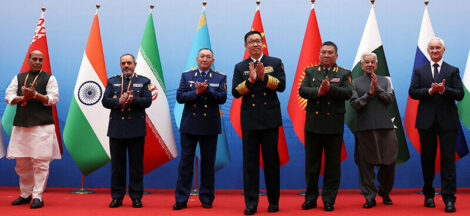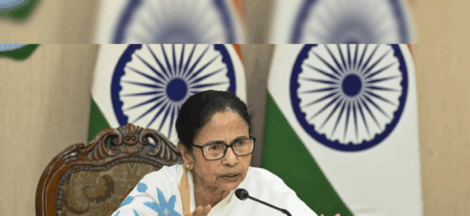By Anjan Roy
The new governor of the Reserve Bank, Sanjay Malhotra, has taken to monetary policy formulation and the world of finance like fish to water. Within a short period of his taking over, Malhotra has got into his charge with a refreshing confidence.
RBI’s monetary policy, announced on Friday June 6, is surprisingly breezy and introduces a reset policy with aplomb. He says he has worked on the basis of a 5x3x3 matrix. That starts on a new and quite optimistic note.
He states: “This 5x3x3 matrix of fundamentals provides the necessary core strength to cushion the Indian economy against global spillovers and propel it to grow at a faster pace.”
The fundamental point is that the Indian economy presents “a picture of strength, stability and opportunity”. What are these. First, according to RBI, the strong balance sheets of five sectors, namely, corporates, banks, households, government and external sector.
Second, there is stability on all three fronts – price, financial, and political – providing policy and economic certainty in this dynamically evolving global economic order.
Third, the Indian economy offers immense opportunities to investors through 3Ds – demography, digitalisation and domestic demand
On the basis of these fundamentals, Malhotra has delivered a blockbuster combination of a 50 basis point reduction in repo rate and 100 bps reduction in CRR. With the back to back reductions in repo rates since February 2025, the total cut in repo rate would be 1.50 per cent.
The cut in CRR would release primary liquidity of about ₹2.5 lakh crore to the banking system by December 2025. Besides providing durable liquidity, it will reduce the cost of funding of the banks, thereby helping in monetary policy transmission to the credit market.
No finance minister could have expected a more helpful monetary policy move for easing his burden. Currently, the US president is fighting a daily battle with the US Federal Reserve chairman asking for a cut in interest rates. Donald Trump had often talked of even sacking the Federal Reserve chairman.
An earlier finance minister had asked for cuts in interest rates for providing fresh impetus to the economy. However, the RBI governor, Subba Rao, had then refused to yield and there ensued a tussle between the finance minister and the RBI governor.
For now, with so many upfront concessions, Reserve Bank seems to have exhausted its arsenal of policy tools. In case, things go a little wrong, the RBI would not be in a position to directly intervene with fresh policy tinkering.
RBI has admitted its helplessness in an unforeseen emergency. The governor has admitted that “under the current circumstances, monetary policy is left with very limited space to support growth.” Hence, the MPC also decided to change its stance from accommodative to neutral.
From here onwards, the MPC will be carefully assessing the incoming data and the evolving outlook to chart out the future course of monetary policy in order to strike the right growth-inflation balance.
In a way, the Reserve Bank seems to have disregarded one of the received wisdoms of traditional macroeconomics — the so-called Philips’ Curve. That is, the growth (employment) inflation dynamics where the two does not go in tango mostly. To maintain high growth, you might be compromised with some faster inflation and vice versa.
Malhotra seems to have taken his position that in India, you can have faster growth at the same time with stable or low inflation. Listen to Malhotra’s position on the growth-inflation dynamics:
“I would like to highlight that there is no tussle between price stability and growth in the medium and long term. Price stability preserves purchasing power, imparts certainty to households and businesses in their savings and investment decisions and ensures congenial interest rate and financial conditions, all of which foster consumption, investment and overall activity.”
We hope to be in a virtuous circles of demand, investment, growth and ever expanding supply line for maintaining a sable price level. I case of a sudden break in the cycle and then a flagging one of in the chain, the virtuous cycle can get reversed when corrective measures would be needed. It will be then the responsibility of the government to step in rather than expect the RBI to do the heavy-lifting.
These thoughts would admittedly be those of a nay-sayer, who would be the unwelcome guest in the room. But some such possibilities shouldn’t be altogether ruled out in an uncertain world like ours, particularly when you have Donald Trump as the president of the United States, which is the largest economy and sets the tone for the global economy.
Such a situation would really transfer the responsibility of further encouraging growth to the fiscal sector. That is, the government would be required to move in quickly to further encourage growth and buoyancy. Will the next budget be synchronised with the current monetary policy stance and introduce at least some measures for a leg up to growth. (IPA Service)



 Pakistan’s UN Counter-Terrorism Roles Stir Diplomatic Unease
Pakistan’s UN Counter-Terrorism Roles Stir Diplomatic Unease 